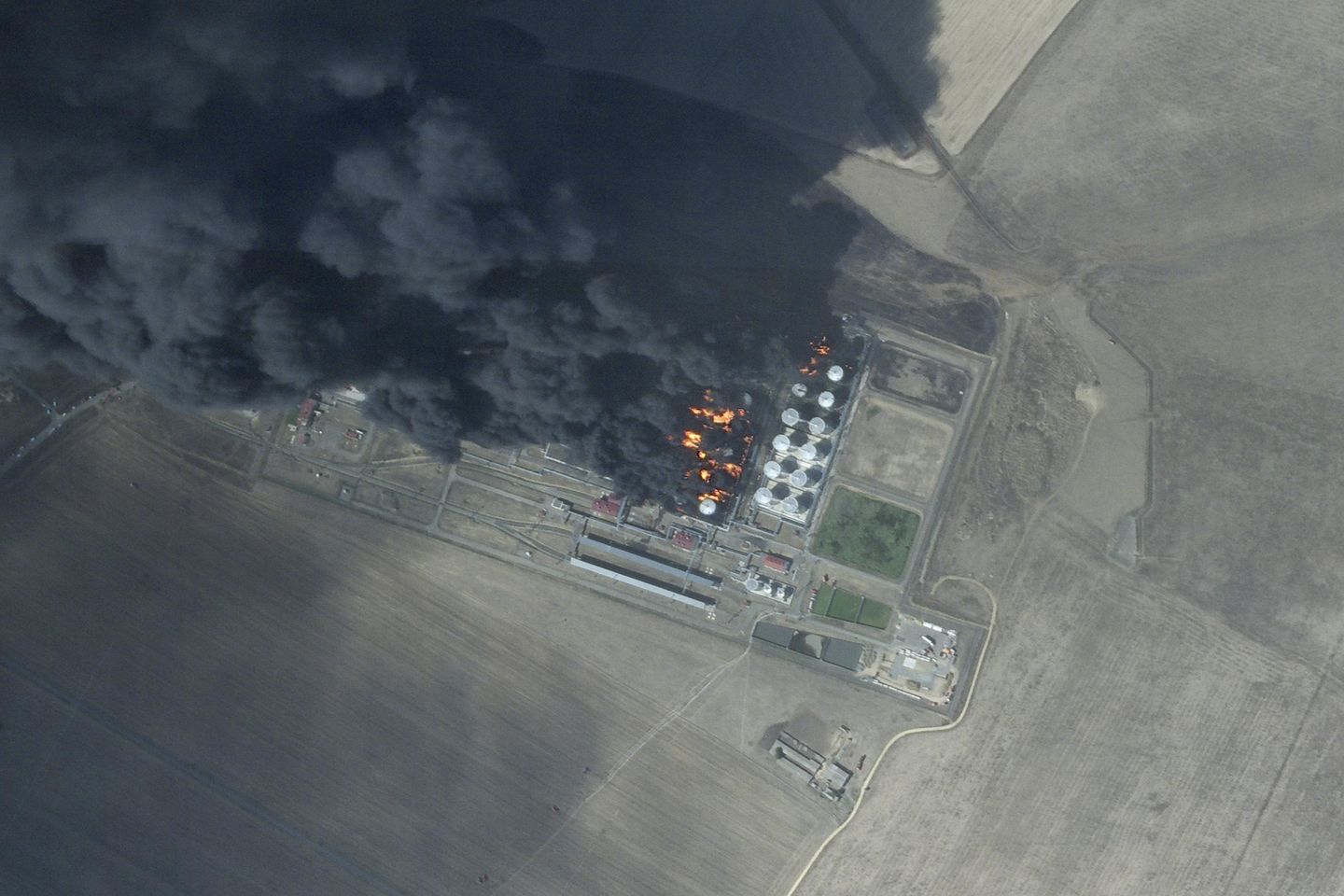
Tightly locked in war with Russia, Ukrainian President Volodymyr Zelenskyy may have found the “card” that U.S. President Trump once insisted he lacked.
While Russian forces continue to grind forward across the battlefront in a war of attrition, Ukrainian long-range strikes on oil refineries across the vastness of Russia are hacking deep into the nation’s energy infrastructure, impacting as much as 17% of national refining capacity.
Making matters worse for the Kremlin, repairs to the facilities are being stymied by Western sanctions.
In a contentious press conference on March 1, Mr. Trump told his Ukrainian counterpart, “You don’t have the cards.”
The reference was to Kyiv’s apparent inability to wrest back the initiative in any sector of the war from bigger, more populous, more heavily armed Russia.
That may be changing as a new campaign takes shape.
“Ukraine is hammering Russia’s ‘Achilles heel,’” wrote retired U.S. Gen. Ben Hodges, former commanding general of U.S. Army Europe, and a strong supporter of Kyiv, on Saturday on X. “Apparently the Ukrainians do have quite a few cards.”
Mr. Hodges was referring to data released earlier the same day by Anton Gerashchenko, a former adviser to Kyiv’s Interior Ministry and self-described “Ukrainian Patriot” who posts open-source intelligence about the conflict.
Mr. Gerashchenko had translated a post from the Russian social media channel “Nezgar.”
“The choice of refineries as targets is explained by their technological vulnerability,” the translation reads, noting that modern Russian refineries were built using key components from Shell (U.K.), Axens (France), UOP (U.S.) and Topsoe (Denmark).
Due to sanctions, supplies and, crucially, replacement parts from those sources have dried up, leading to reliance on Chinese substitutes. That presents a problem.
“For complex processes, [Chinese] technology lags, and replacing Western components with Chinese ones requires restructuring the entire refinery unit,” Mr. Gerashchenko’s translation read.
Russian authorities have tried to downplay the disruption, but the list of targets grows longer by the day: A pumping station on the Druzhba pipeline at Unecha was struck, temporarily halting flows to Europe. The Ust-Luga oil terminal near St. Petersburg, a key export hub, was set ablaze. Refineries from Ryazan, 125 miles southeast of Moscow, down through Volgograd on the Volga River have been hit, many sustaining damage serious enough to require weeks of repairs.
Analysts say the geography is deliberate.
“The Ukrainians are attacking an arc of refineries, starting from Ryazan, which is south of Moscow, all the way to Volgograd,” Sergey Vakulenko, a senior fellow at the Carnegie Russia-Eurasia Center told The Associated Press.
That corridor is not only Russia’s main artery for road traffic to Black Sea resorts, but also the heartland of its grain harvest.
“That region is where people are driving through on their way to (resorts on) the Black Sea. That’s the region where most of the harvest operations are going on. And that’s also a rather densely populated region.”
The bulk of Russia’s refining infrastructure lies in European Russia, where it is increasingly vulnerable to Ukrainian drones that now boast ranges in excess of 900 miles.
A new weapon, detailed by Mr. Zelenskyy on Aug 20, is the domestically produced cruise missile “Flamingo.” According to Kyiv media, it has a range of 1,864 miles, and by December, January or February will enter mass production.
Western nations have been reluctant to supply Kyiv with long-range arms or have placed limitations on their use. Domestic production changes the equation — a matter recognized in Russia.
“Facilities previously considered out of reach are now threatened, creating a scale problem for air defense — protecting all refineries across the territory, from Kaliningrad to the Far East, is practically impossible,” Mr. Gerashchenko’s post continued. “Consequently, Russia’s oil and gas industry, once a source of economic strength, has become a vulnerable spot.”
It is not just online, say OSINT specialists who are seeing the trend.
News agency Reuters, in an analysis published by its Moscow office on Monday, wrote that Ukrainian attacks on 10 plants have “disrupted at least 17% of Russia’s refinery capacity, or 1.1 million barrels per day.”
This is problematic for the Kremlin both in terms of domestic consumption and exports.
Fuel shortages are causing queues at gas stations in various parts of Russia — from Crimea and occupied eastern Ukraine to Vladivostok and Primorye in the Russian Far East.
Perhaps more problematically for national accounts, Russia relies on oil and gas exports for a quarter of budget revenues, Reuters found.
Russia is hitting back. On Wednesday, Russia launched attacks on Ukrainian energy sites, leaving 100,000 people across the country without energy, Mr. Zelenskyy said.
In Russophone warfare, after the summer campaign season winds down, autumn rains create the “rasputitsa” (“time without roads”) during which military maneuver operations are slowed or halted.
Energy demand soars in the freezing winter, which also — due to frosted ground — enables a resumption of major operations.
A squeeze at the pump
The pain has been felt across Russia. The Financial Times reported that the wholesale price of Euro-95 gasoline jumped 55% in August.
The Wall Street Journal noted that about 13% of national fuel production is offline and rationing has appeared in places as far apart as Crimea and the Siberian republics.
Moscow has scrambled to compensate. With domestic refining crippled, it has boosted crude exports instead.
Russia increased its August crude oil export plan by around 200,000 barrels per day, shipping more out of its western ports to keep revenue flowing. While this could help stabilize the Kremlin’s budget in the short term, it risks worsening domestic shortages over time.
The government suspended gasoline exports on July 28 and summoned oil executives for crisis meetings, yet little has changed on the ground.
For ordinary Russians, the timing could not be worse. Late summer is peak season for travel to the Black Sea, and farmers are racing to complete the harvest.
Yuriy Boyechko, head of the humanitarian group Hope for Ukraine, was blunt: “Some months more of targeted strikes on the Russian oil infrastructure could bring the industry to its knees … most of the equipment used in these refineries is imported from Europe or the United States, and sanctions prevent Russia from buying replacement parts.”














